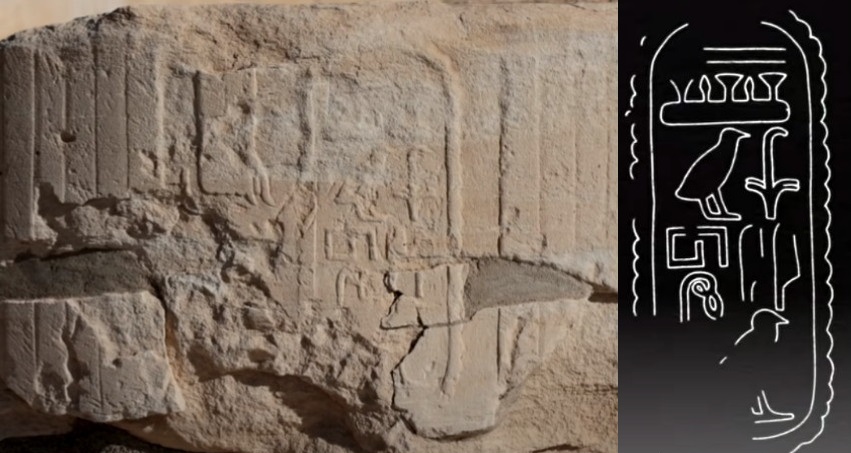
Graphic Credit: Joel Kramer
Does God’s name, Yahweh, appear outside the pages of the Bible? The remains of a temple at Soleb in the desert of Sudan were excavated in the 1950s. This temple was founded by the Egyptian king Amenhotep III who reigned from around 1400 BC. While studying the book: “Egypt, Canaan and Israel in Ancient Times,” by Robert Redford, which describes this excavation, archaeologist Joel Kramer came across reference to Yahweh. Describing an inscription there Redford wrote: “For half a century it has been generally admitted that we have here a Tetragrammaton, the name of the Israelite god, ’Yahweh’ and if this be the case, as it undoubtedly is, the passage constitutes a most precious indication of the whereabouts during the late fifteenth century B.C. of the enclave revering this god.” This amazing statement aroused Kramer’s interest to such an extent that he travelled to Soleb to see for himself. He describes that visit in a YouTube video:
The pillars of the temple are decorated with carvings of the enemies of Amenhotep III and Egypt. Amongst those on the north side, Kramer indeed found the carving referring to Yahweh. The graphic above is his photo of this inscription together with a drawing of the cartouche (oval) containing the hieroglyphics. The inscription is damaged, but the message can easily be reconstructed and the translation, agreed to be ‘undoubted’ by secular scholars, is: ‘Land of the nomads of Yahweh.’
The title “nomads of Yahweh” is most appropriate for the early Israelites before they became a settled nation in Canaan. A straightforward reading of the OT affords a date for their Exodus from Egypt of around 1446 BC. They wandered in the wilderness for 40 years before arriving in Canaan at the end of that century. The Soleb inscription, dating from around 1400 BC, fits exactly with the status of the Israelites according to the early date for the Exodus. It indicates that a nomadic people group, distinguished by their adherence to their God Yahweh, existed to the north of Egypt. They were sufficiently numerous and hostile that the Egyptians considered them a threat. A fuller account of the significance of the find can be viewed at the following link:
https://www.youtube.com/watch?v=xVsFhlJF8H4&t=11s&ab_channel=LighthouseChurch-TwinFalls
The Soleb inscription provides convincing evidence of the existence of the Israelites as a nomadic people group to the north of Egypt at the end of the 15th century BC (Late Bronze Age). This is in excellent accord with a straightforward understanding of the text of the book Exodus. It further shows that the appellation “Yahweh” was known in Egypt around this time; just as would be expected from the encounters of Moses with Pharoah during the departure of Israel from Egypt (Exodus Ch. 5 & 6). The inscription points to the reliable historicity of the Pentateuch.